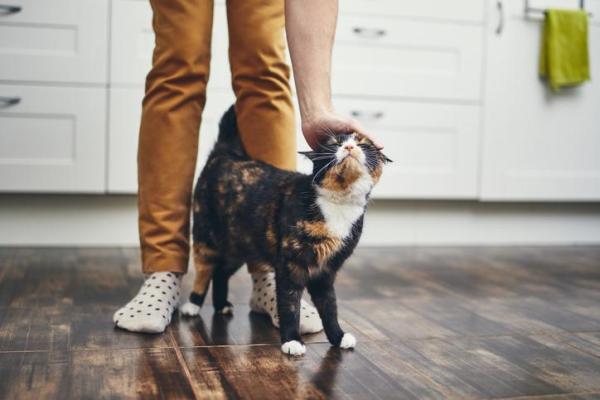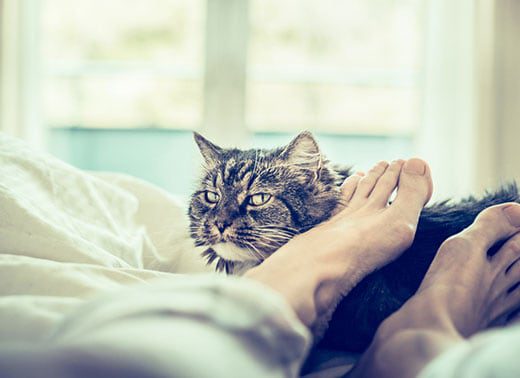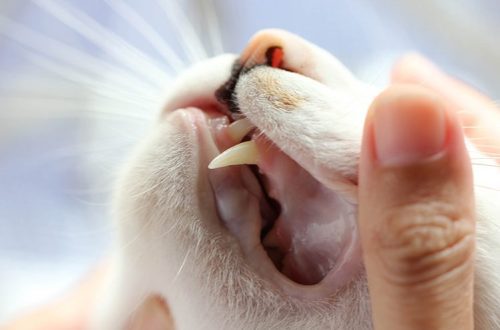
Why do cats rush to their feet
Cat owners are well aware of this habit of pets: as soon as you get comfortable to rest, the cat immediately begins to attack the legs. And don’t move your toes, because your furry friend is a hidden hunter and will certainly attack them too!
Why does a cat rush to its feet and bite? Any resting owner whose legs were attacked must have thought about the reasons for this behavior.
Why legs
It’s all about instincts. As noted by Cat Health: “Cats love to chase objects and living things because they are driven by an innate instinct. They are predators, so chasing prey is second nature to them. In some cats, this urge is so strong that even the movement of the legs provokes it.” When a cat sees her feet moving under the covers, her instincts are on high alert: attack!
Why does a cat bite on its legs and why are they so attracted to it? In shape and size, human feet are perfectly matched to cats’ favorite prey species. “Since cats hunt alone, their prey must be small in size, because only in this case they can catch it on their own,” explains International Cat Care. It is worth being careful if indoor shoes are somewhat reminiscent of small mammals – this can also lead to an attack.
When cats attack feet
Cats are eccentric and sometimes complex creatures that have won the hearts of many pet lovers. They are very persistent, so if a furry pet wants attention, she will not rest until she gets her own. She will do everything possible for this, including attacking your feet and ankles. This usually happens when the owner is sleeping or trying to work.
As a general rule, a cat will slap the legs with its paw if it wants to eat or communicate, or is in an aggressive mood. But more often than not, she does it because she wants to play. A cat that is looking for a playmate does not show hostile or fearful behavior – quite the opposite.

“The cat does not show dominance towards the prey, does not retreat or avoid the victim with characteristic signs of fear,” explains RSPCA Australia. “In fact, a cat often hides behind furniture and waits for a person to pass by, and then jumps out and attacks his ankles.” This behavior is especially common in kittens who will rush to their feet even if the owner is just walking around the room doing their own thing.
Cat aggression
Sometimes pets can get overexcited during the game and move to a new level of behavior. Then the cat bites the legs, scratches and injures the skin. Cat aggression is difficult to confuse with anything. In addition to biting, an aggressive animal exhibits one or more of the following behaviors:
- Growl.
- Hiss.
- Released claws.
- Open mouth.
- Rigid stand.
- Curved back.
Aggression is often the result of overly mischievous games or hostility caused by an external factor, such as illness. Sometimes in this way a cat shows a possessive instinct towards a new pet in the family. Why do cats rush to their feet, showing viciousness? The feet are easily accessible and imitate the movements of the animal.
To calm an aggressive cat, you need to avoid games that turn into hooliganism and switch the attention of the animal. “A cat that often chases human feet can be distracted (distracted) by waving a toy in front of its nose, after which it begins to play with the toy, and not with the owner’s legs,” advises the American Animal Hospital Association. You need to buy stuffed toys that will make your feet less attractive to chew on.
When to See a Veterinarian
If a cat bites its legs at night or at other times of the day, and its aggression causes concern among the owners, you should contact a veterinarian as soon as possible. Your doctor will ask questions about your pet’s other behaviors, including destructive habits. To prepare for the visit, you need to make a list of problematic moments, including an attack on the legs. The recommendations of a veterinarian will help to cope with extravagant cat antics.
Understanding a cat’s body language and knowing what behavior is normal and what isn’t are two important tools to help set up a more positive interaction with your pet. A little time and a little patience – and the legs will be safe and sound.





